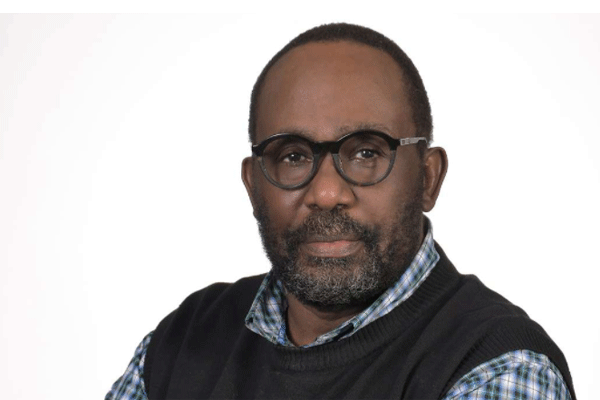Prime
To live and die on our lands

Author: Charles Onyango Obbo. PHOTO/FILE
What you need to know:
- For starters, those in power must learn to listen and defer to those clever, bespectacled, socially awkward chaps called environmentalists.
The busy town of Lukaya on the Kampala-Masaka highway has turned into a ghost town already, following the recent destruction of the nearby Katonga bridge by heavy floods.
The Lukaya economy is built on transit traffic along the key Northern Corridor route, which leads to Rwanda, the Democratic Republic of Congo, and Tanzania. Motorists from Kampala connecting to Masaka are using the Mpigi- Kanoni-Sembabule-Villa Maria Road, which is 56 kilometres longer, considerably jerking up costs, as the Uganda National Roads Authority (UNRA) scrambles to repair the broken bridge.
The floods that wrecked the bridge are blamed on the extensive commercial exploitation, which caused silting and blocked natural drainage. The Katongo bridge catastrophe is among the first significant blows that climate change (or environmental crisis) has dealt to East African regional trade in Uganda.
Domestically, these environmental problems are set to cause far-reaching disruption. Over the last two years, this publication has published some unsettling stories about the impact of rice growing over the previous 40 years in the middle eastern Uganda region, loosely known as Bukedi. As swamps dry out because of the extensive farming in wetlands, a race is on to find wetlands further away to exploit. In a historical first in Uganda, it has been reported that rural farmers are travelling up to 20 kilometres away to find the next wetland victim.
On a trip to Pallisa 10 years ago, we were so shocked by the extensive rice farming in wetlands, some along the main roads, we stopped for long minutes to behold the making of a future catastrophe. In Pallisa, we asked whether the leaders from the area who travel along the roads every day didn’t see the unfolding problem. Our inquiries were met with bored, rolled eyes.
This more extended history of growing rice in wetlands in Bukedi, as this column has noted before, has already had a demographic impact. Over the years, thousands of families, essentially environmental refugees, have migrated to the far ends of Busoga, and parts of Buganda, especially Mukono, after their lands collapsed. In these new places they have settled in, you guessed right, they are farming in the wetlands.
Not everyone is losing, though. People sell when they move from exhausted land that cannot support them. Usually, they sell cheaper than if the ground had a healthy well in it. The middle-class fellows from the area typically buy the land, fence it, and then do intelligent things with it; grow trees and shrubs, dredge wells and streams, and mulch the ground. In a few years, the lands are even more fertile than before, with a well full of water in the dry season, as all around, the ordinary folks suffer.
I know some green-fingered folks in Busoga and in Buganda, who bought barren lands and brought them back from the dead, who were confronted by water-stressed and hungry peasants from nearby villages who invaded their farms armed with machetes and axes, seized food from the gardens, filled up their jerrycans with water, and carted away a few goats.
Understanding what the structural problem was and not wanting to escalate the conflict with the communities for the sake of their future security, they didn’t report it to the police.
These environmental problems, then, are already producing the triple issues of poverty (and landlessness), massive economic inequality, and social conflict. This is a conflict that’s spreading all over the country.
They are also creating regional disparities that could lead to big national security problems in the future. In the north and northeast, with their environmental problems exacerbated by abusive mining practices and attacks by armed pastoralists from across Kenya – driven to the edge by a climate crisis in their areas – the Karamojong are staging deadly cattle raids in the neighbouring regions. The government is doubling down on its “kill the Karamojong” approach, and everyone is dragged further into hell.
To the south of the Bugisu region, as floods and landslides continue to exact a toll, to their south, the sandy, once “not so fertile” parts of Bukedi are secure from flooding partly because they are sandy. Additionally, erosion from the highlands is also depositing rich soils there, improving the fertility of the lands.
One has to wonder how long these patterns of fertile or less environmentally-troubled lands will exist next to those ravaged by floods, landslides, and drought without the breakdown of peace. I see a possible future of environmental militias; on the one hand, staging raids on fertile areas for their livelihoods, and on the other, organising to protect their temporary advantage.
To survive, Uganda must be governed for a troubled climate change age. For starters, those in power must learn to listen and defer to those clever, bespectacled, socially awkward chaps called environmentalists. They might not all be great for Instagram and TikTok, but they hold the keys to our future.
Mr Onyango-Obbo is a journalist, writer and curator of the “Wall of Great Africans”. Twitter@cobbo3




